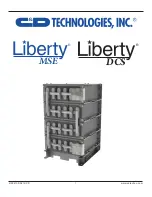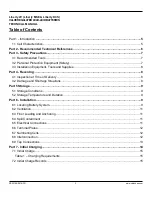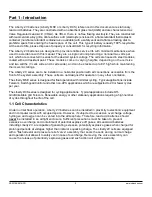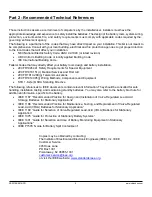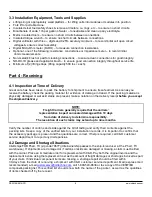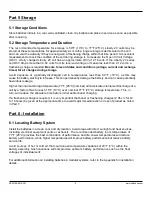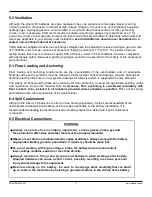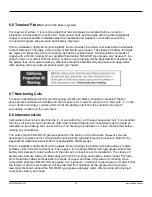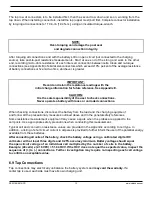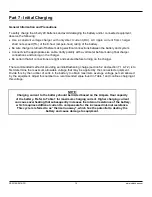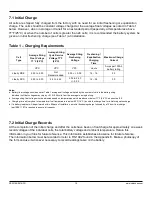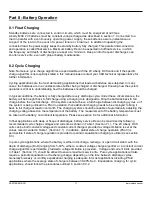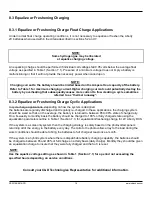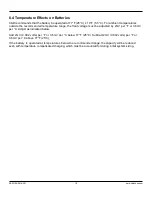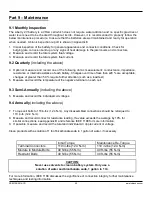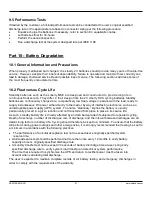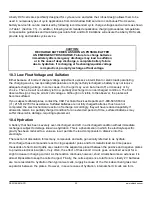
RS02109/0814/CD
11
www.cdtechno.com
6.2 Ventilation
Although the Liberty 2V batteries are valve regulated, they can produce minimal gas emissions during
normal operation. If exposed to abnormal high voltage charging, the cells may vent potentially explosive
hydrogen gas. Hydrogen gas when accumulated in a confined area that exceeds four (4%) percent by
volume in air is explosive. C&D recommends not allowing hydrogen gasses of greater than one (1%)
percent by volume to accumulate. Contact the local code enforcement officer to determine what codes and
levels are applicable to your battery room installation.
Lead acid batteries should never be installed in a
sealed, non-ventilated cabinet or enclosure.
VRLA batteries subjected to extreme overcharge voltages have the potential to release hydrogen gas at a rate
of 0.000269 cubic feet per minute per ampere of charging current at 77°F (25°C). The Liberty 2V series
testing shows that they recombine at nearly 99% efficiency under normal conditions. However, compliance
with appropriate safety measures regarding hydrogen evolution is essential for the safety of the equipment
and personnel.
6.3 Floor Loading and Anchoring
Floor loading and anchoring requirements are the responsibility of the user/installer and all applicable
building codes and regulations must be followed. C&D provides connection drawings, weights, dimensions,
and floor loading information on our system drawings for reference which is supplied with every shipment.
The Liberty 2V floor-mounting base has provisions for floor anchoring. Consult the applicable building codes
and regulations for specific requirements.
In all cases, floor anchoring is considered mandatory with
floor anchors to be installed in all locations provided unless otherwise specified.
Floor anchor sizing
and hardware are the responsibility of the user/installer.
6.4 Spill Containment
Although the Liberty 2V batteries contain no free flowing electrolyte, it is the sole responsibility of the
user/installer to follow all local building and fire codes applicable to the battery installation. It is
recommended consulting the local fire marshal or building inspector to determine if spill containment
is required.
6.5 Electrical Connections
WARNING:
•
Always use protective insulating equipment, such as gloves, shoes, eye and
face protection. Wrenches and other tools must be properly insulated.
•
Observe local, state, and national electric codes at all times. Always work with the battery
ungrounded. Battery ground connections, if required, should be made last.
•
To avoid working with high voltages, break the battery down into convenient
lower-voltage modules, equal to or less than 48-volts.
•
Always maintain a firm grasp on tools and hardware when working on the battery.
Dropped hardware can cause a short circuit, possibly resulting in serious personal
injury and/or damage to the equipment.
•
Before working on the battery, be sure to discharge static electricity that can build
up on tools or the technician by touching a grounded surface in the vicinity of the battery.

